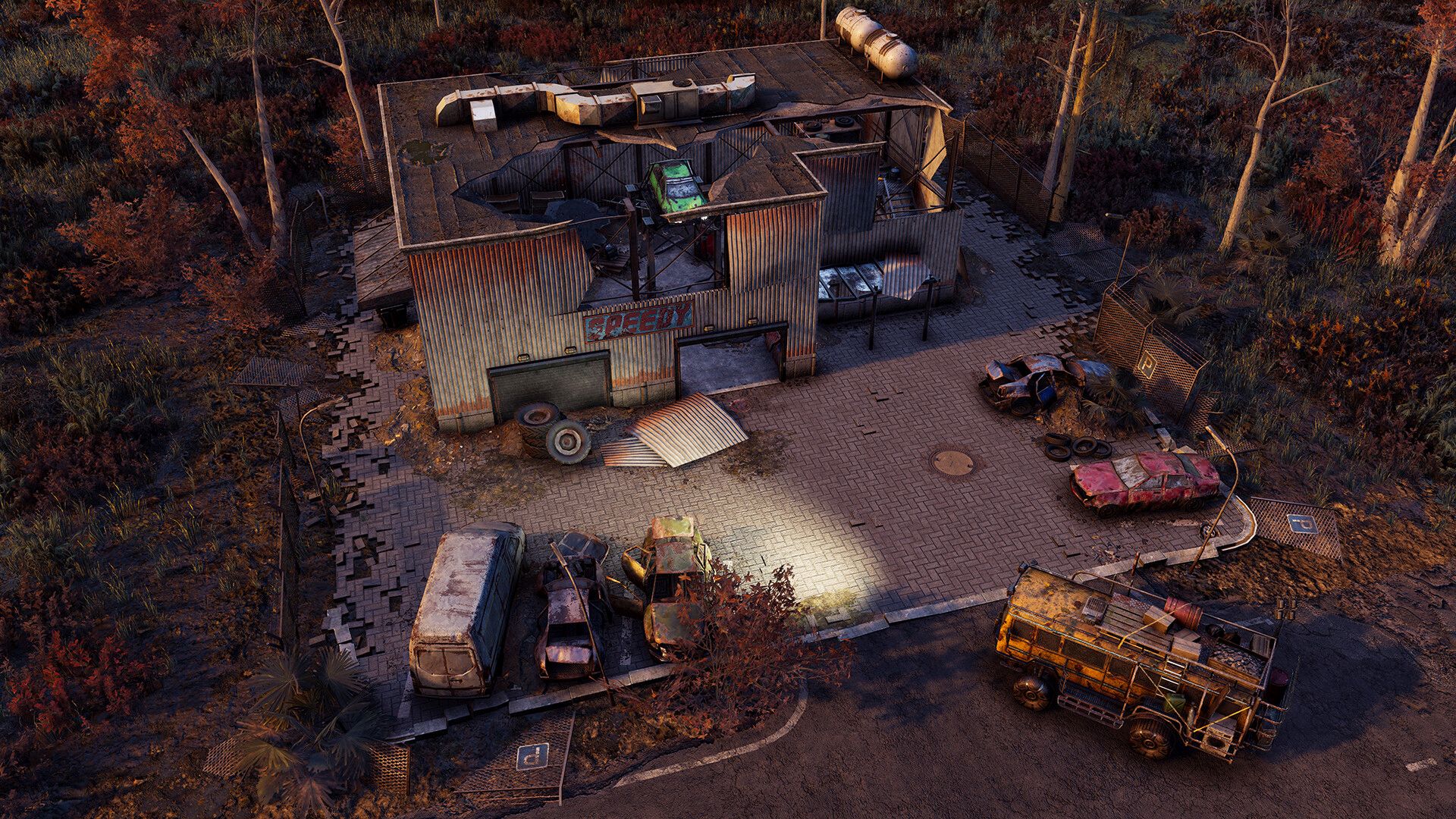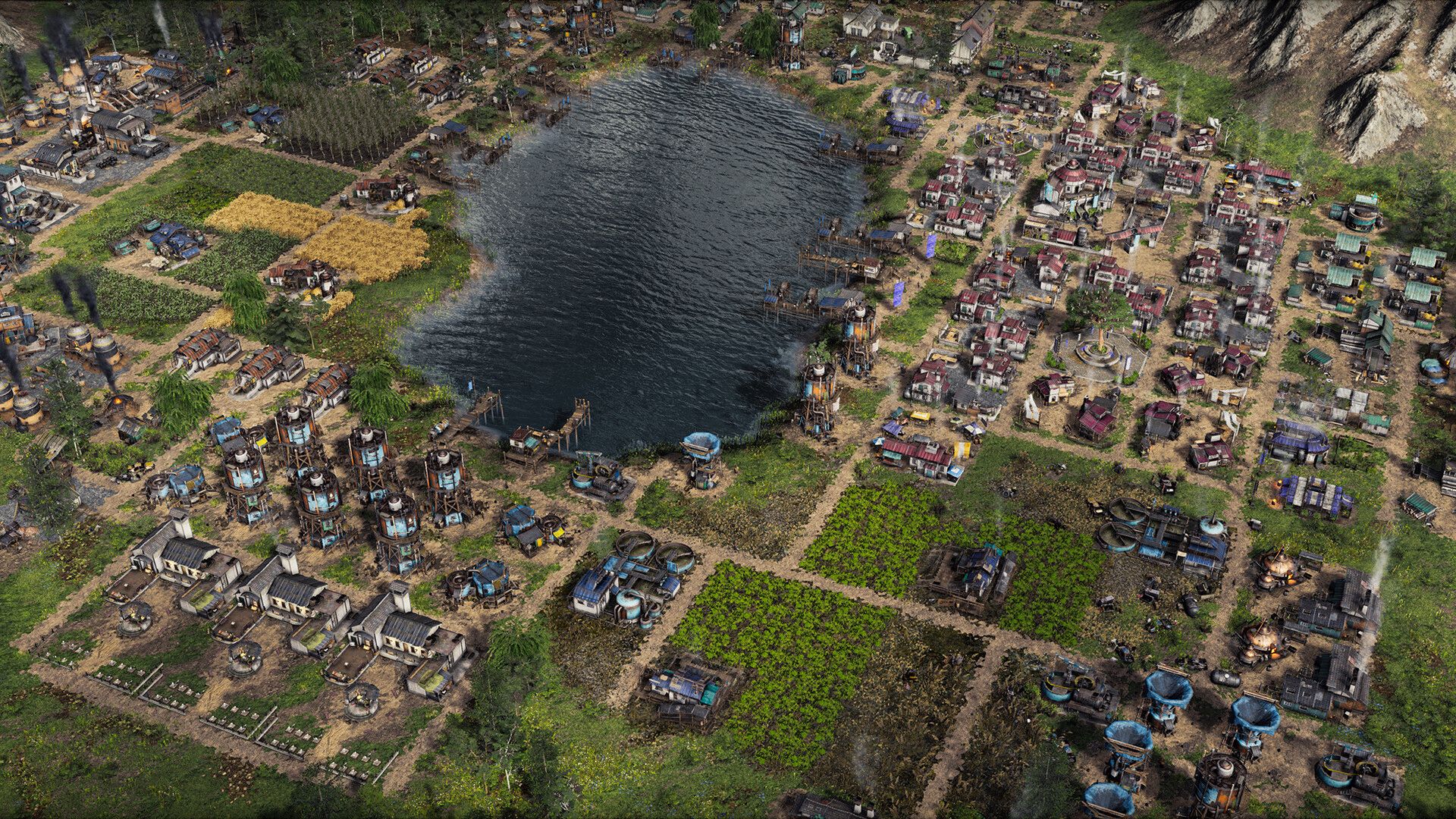Endzone 2 Preview
If God forbid, the world is ever transformed into a post-apocalyptic irradiated hellscape, we’ll know what to do. We’ve played lots of games where players survive and rebuild civilization. Add to that always-growing catalog Endzone 2, which builds on 2020’s Endzone-A World Apart. Endzone 2 is now in Early Access.
Forage for Scraps
Endzone 2 sits squarely in the middle of the survival/building genre. Most of its mechanics are familiar. You gather resources or raw materials, both for the immediate survival of your settlers and to expand your humble settlement. But growth requires more resources, a growing population demands services and the loop continues. Natural weather events, the changing seasons, and the lingering toxicity of the landscape play a role, too.
The game starts simply enough, with you and a small group of survivors in a repurposed yellow school bus, scouring the roadside and ruins for basic supplies. Nearly every derelict shack or abandoned car yields something useful. Eventually, you find a bit of habitable land and start to build a settlement, likely on the bones of a little town gone to seed.

Over time, and with the correct resources, you construct all the usual basics of manufacturing, distribution of goods, and processing. The lives of your stalwart settlers marginally improve and your workers grow in number. Your colony might not be thriving, exactly, but you’re keeping people alive.
Far Afield
It’s at this point in the gameplay loop that Endzone 2 takes a bit of a turn. In order to progress through the game’s extensive tech tree and add new types of buildings, you need knowledge points. Earning said points means hopping onto the bus again and exploring ever farther afield from home. But more than that, it means building a series of additional settlements. These satellite towns will be located near specific resources like fresh water, which you need for drinking (obviously) but also for certain types of manufacturing. In time, you’ll need to connect all the different settlements so that they can share resources and products. This means creating what old-style games would call trade routes. Additionally, while Endzone 2 offers depth and replay value, the game’s UI and mechanics get a bit convoluted and aren’t always well explained.

It’s a lot to handle, but Endzone moves at a fairly leisurely pace. You’re also free from dealing with combat, so there’s no need to build extensive fortifications or equip your citizens with weapons. Unlike most city builders, your settlements always look a bit ramshackle and beat down, even at the end of the tech tree. You can’t paint away the apocalypse.
There’s a fair amount of sharp detail, both in the structures and environments, with some nice water and reflection effects and time-of-day lighting. The soundscape is less impressive, with just passable voice work, lackluster environmental audio, and ambient synth tracks that don’t do much for the emotional content. There are some long load times, too, and a fair number of little Early Access-type bugs.

The End of the World as We Know It
In a weird way, games like Frostpunk and Endzone 2 are ultimately hopeful. No matter what humans do to make their world inhospitable, hard work and ingenuity will turn things around. I enjoyed Endzone 2 and the way it treats city building, survival, and expansion. I look forward to following it as it winds toward full release. As a bonus, now I know what to do after the apocalypse. Just hop on the bus and start scavenging.
***PC code provided by the publisher for preview***

